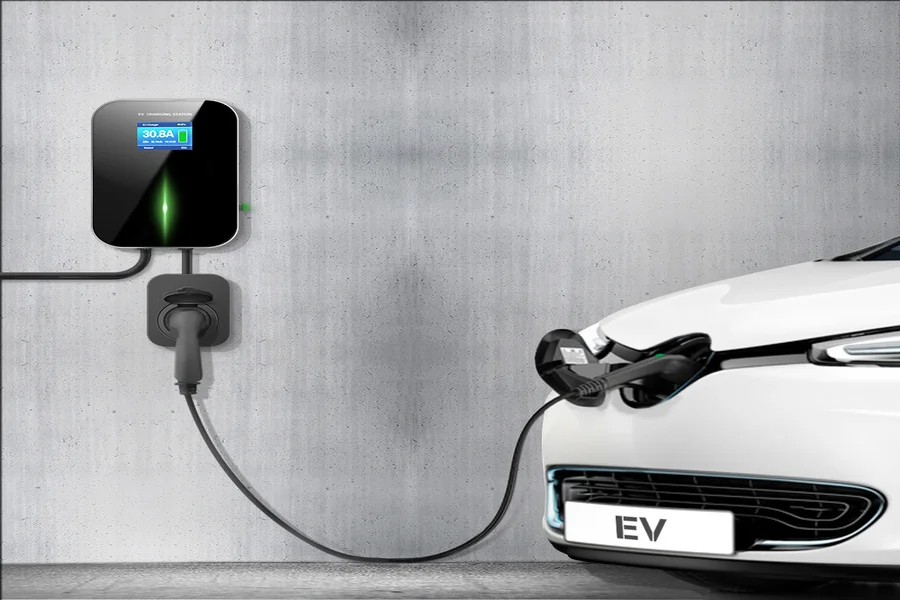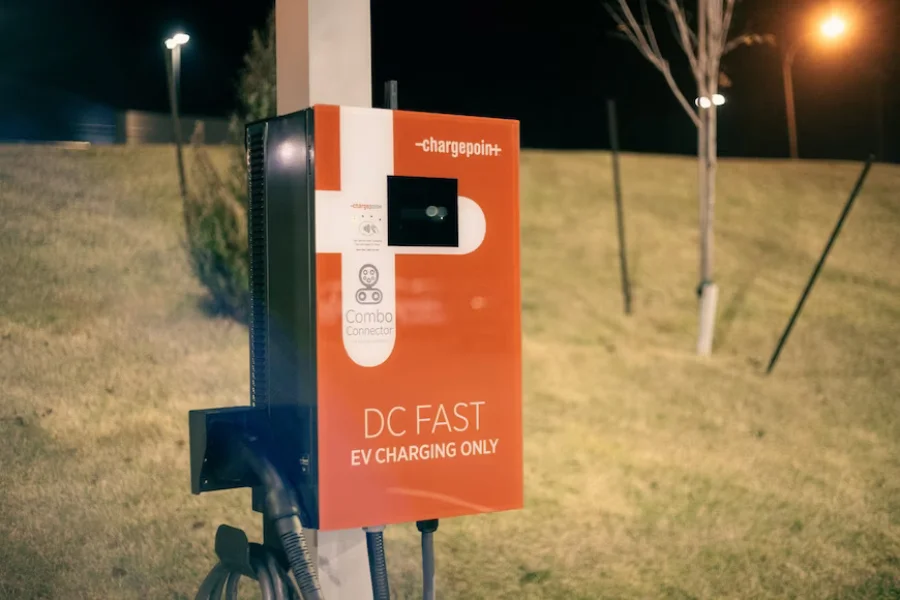EV charging stations are becoming a booming business as the number of electric vehicles continues to rapidly increase globally. For example, approximately 2.1 million electric cars were sold in 2019, resulting in a 40% year-on-year increase.
Moreover, modern consumers perceive electric vehicles as a promising solution to reducing air pollution, lowering greenhouse gas emissions, and diversifying energy. For example, a report by the International Energy Agency (IEA) shows that electronic vehicles in 2019 reduced oil consumption by almost 0.6 million barrels per day.
In addition, electricity generation for global electric vehicles emitted 51 Mt CO2-eq, roughly half the emissions that an equivalent fleet of ICE vehicles would have produced. These positive outcomes will continue to increase the demand for charging stations, thus creating a business opportunity.
Table of Contents
Why EV charging stations have business potential
Types of EV charging stations available on the market
Things to consider when starting an EV charging business
Market segments to target
Conclusion
Why EV charging stations have business potential
As the world moves towards a sustainable future, EVs have become increasingly popular. This popularity has translated into an increased need for charging stations, thus creating a business opportunity for entrepreneurs and companies to invest in EV charging infrastructure.
EV charging station global market size
Statistics show that the global EV market size is rapidly growing. For instance, the number of electric cars increased from 17,000 in 2010 to 7.2 million in 2019. In addition, the EV market is projected to reach US $457.6 billion in 2023 and continue growing at a CAGR of 17.02% to reach US $858 billion by 2027.
Moreover, approximately 6.9 million EVs were sold worldwide in 2021. EVs are projected to account for 34% of the global vehicle fleet by 2028, a number projected to grow to 54% by 2035. With more EVs on the road, there is a significant need for charging stations.
As of November 2022, there were approximately 2.8 million charging stations, which is projected to grow to 16.83 million by 2028. The global electric vehicle charging station market value was estimated at US $12.41 billion in 2021 and is projected to increase to $142.36 billion by 2030, growing at a CAGR of 31.14%. These statistics show the real potential of the EV charging business.
Factors driving the global demand for EV charging stations
There are multiple factors driving the demand for EV charging stations. These include:
- Globally increased demand for EVs, which translates to higher demand for EV chargers and charging stations
- Supportive government policies and incentives promoting the installation of charging infrastructure
- Advancements in charging technology, including faster charging speeds and wireless charging.
- Increased integration of charging infrastructure with renewable energy sources, such as solar and wind power. These have helped reduce carbon emissions, which is crucial given the higher consumer awareness of climate change and environmental problems.
Types of EV charging stations available on the market
There are three primary types of EV charging stations, classified as levels 1 to 3 and characterized by different charging capacities and requirements.
Level 1 EV charging stations

Level 1 EV charging stations are the simplest type of charging station and draw power from a standard 120-volt AC outlet. They charge a vehicle at a rate of 3 to 5 miles per hour and are typically used in residential charging or locations where EVs are parked for long periods, such as workplaces or hotels. Also, they are mainly utilized for hybrid electric vehicles (PHEVs).
Level 2 EV charging stations

Level 2 EV charging systems draw power from a 240-volt AC outlet, making them more powerful than level 1 stations. Their charging capacity enables them to charge an EV at a range of 12 to 80 miles per hour, meaning it can fully charge within 6 to 12 hours. As a result, it is considered ideal for public locations, such as parking garages, retail centers, and apartment complexes.
Level 3 EV charging stations

Level 3 EV charging stations are also known as direct current fast charge (DCFC) stations. They are the quickest charging stations in the market since they use a DC power supply to charge the EV batteries. The DCFC stations use a 400-900-volt power supply and can charge an EV at 3 to 20 miles per minute. Thus, they are ideal for corporate settings, public areas, and highway travel stops.
Things to consider when starting an EV charging business
Companies and entrepreneurs targeting the EV charging industry must consider various factors when setting up their business. These include:
1) Determining the charging station location and capacity
The first consideration is location and capacity, which are critical determinants of an EV charging business’ success. For instance, the station should be located in a high-traffic area with good visibility, easy access, and convenience for EV owners. It should also have adequate parking spaces to provide a safe and secure area for EV owners to park and charge their vehicles.
It is crucial to note that the capacity of the charging station determines the number of charging ports and the charging speed required to meet the needs of the targeted customer base.
2) Choosing the right charging equipment
The type of equipment chosen should meet the needs of the target customers. For instance, the equipment must be compatible with the target customers’ EV models, especially since they may require different types of charging. Moreover, it is crucial to consider the equipment’s scalability, reliability, efficiency, and safety features.
Selecting the wrong equipment that does not serve all customers can hurt a business’s reputation and profitability. Examples of considerations when selecting the equipment include:
- Charging speed
- Port types
- Compatibility with different types of EVs
3) Obtaining necessary permits and licenses
When starting an EV charging station business, it is crucial to research the necessary regulations required in the target area. Entrepreneurs and companies targeting this business opportunity should consult with local authorities to ensure compliance and obtain all permits and licenses.
4) Determining the source of funding
This consideration involves accounting for the total costs of starting the EV charging business, such as installation costs, equipment purchases, and operating expenses. This is followed by determining the source of funding, such as via personal savings, loans, grants, or investors, etc.
5) Developing a marketing and customer service strategy
At this point, it is essential to develop a plan to promote the EV charging business to potential customers and provide them with a positive experience. Some primary considerations include:
- Understanding customer needs and preferences, such as the type of EV they drive, their charging habits, and their preferred payment methods
- Developing a competitive and fair pricing structure
- Ensuring 24/7 availability and accessibility
- Establishing and maintaining responsive and helpful customer service
6) Staying up-to-date with industry trends
The final factor in ensuring the success of the business is staying up to date with industry news, trends, and developments. This ensures awareness of the latest industry trends and technological advancements in EV charging. Things to look out for include:
- Regulatory changes
- Market developments
- Evolving customer preferences
Market segments to target
An EV charging business should target different market segments based on customer needs and tailor their services to meet these needs. For instance, businesses could choose to install level 1 EV charging infrastructure for residential customers so that they can charge their EVs overnight. In contrast, others may provide level 2 charging solutions in locations such as hotels and restaurants, where customers will be parked for extended periods of time.
Examples of different market segments to consider when defining the ideal customer for an EV charging business are:
- Private individuals who own or lease EVs
- Workplaces and destination locations, such as hotels and restaurants
- Public charging networks
- Commercial fleet operators, such as taxi and ride-hailing companies
Conclusion
The increased popularity of EVs is creating a massive demand for charging businesses. The key to starting and running a successful EV charging business is understanding the target market and structuring your charging station business based on the prospects’ needs and preferences. This knowledge can help determine the most convenient location, costs, type of equipment, and pricing.
Visit Alibaba.com to browse the latest EV charging equipment for your business.





 Afrikaans
Afrikaans አማርኛ
አማርኛ العربية
العربية বাংলা
বাংলা Nederlands
Nederlands English
English Français
Français Deutsch
Deutsch हिन्दी
हिन्दी Bahasa Indonesia
Bahasa Indonesia Italiano
Italiano 日本語
日本語 한국어
한국어 Bahasa Melayu
Bahasa Melayu മലയാളം
മലയാളം پښتو
پښتو فارسی
فارسی Polski
Polski Português
Português Русский
Русский Español
Español Kiswahili
Kiswahili ไทย
ไทย Türkçe
Türkçe اردو
اردو Tiếng Việt
Tiếng Việt isiXhosa
isiXhosa Zulu
Zulu